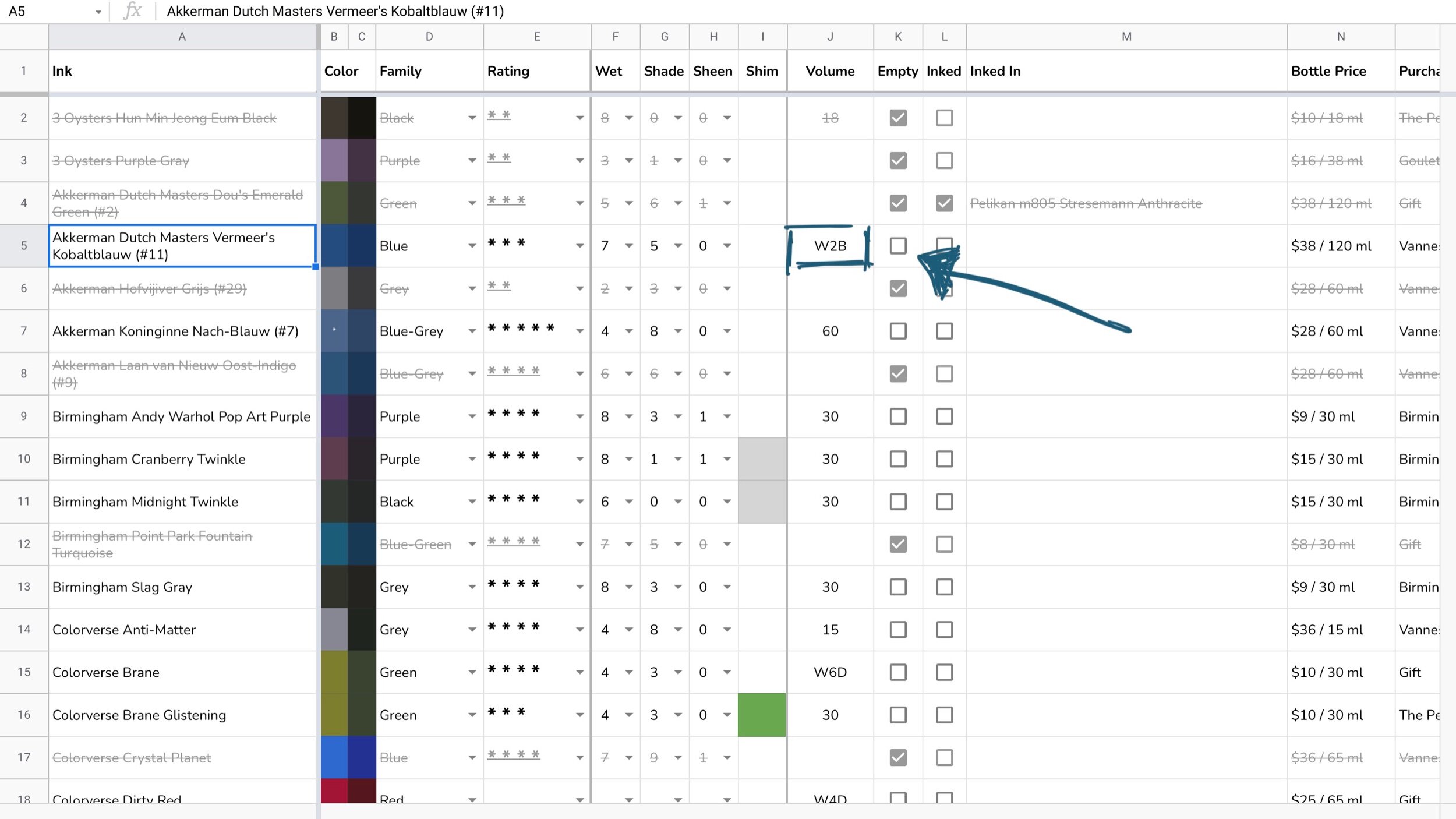S1:P3 - Organizing ink samples with coordinates
A walkthrough of how I organize my ink samples. My system makes it easy to locate exactly the ink sample I want – and get back to writing more quickly. — Season 1, Post 3
Ordering 3 ml or 4 ml of an ink to experiment and see if I like it before committing to a bottle changed the stationery game for me. It wasn’t long until I had an entire drawer full of ink samples.
We’ll call this the Mary Poppins method. One large storage container that requires magic or luck to effectively search quickly. Although, to be fair, searching, in itself, can be fun. Plus: the songs are fun, too.
Mary Poppins and I would rifle through my samples, searching for the one I wanted. I would often pull a couple vials I didn’t want first until I narrowed down the number of unsearched vials to an amount I could scan and finally locate the ink I wanted. No big deal.
As my collection of inks grew, I needed to draw more and more vials before I found the one I was hunting for. Dark days.
Vial sample racks
Vial sample racks offered a light in the darkness, and a pathway out of the Mary Poppins method. Sample racks are commonly made of cheap plastic or silicone. So they’re lightweight and about the same height as the sample vials themselves. Vial racks offer slots for storing vials vertically.
A few racks are made with their rows and columns labeled. I strongly recommend labeled racks. The pre-labeled slits are the most effective part of my ink storage system.
Racks like these are easy to find on the cheap. Wholesalers and science-suppliers offer wide varieties of vial racks. A few pen stores also carry racks now, too, given how wonderfully useful they are. A quick search of “vial sample rack” will give you a generous collection of racks to choose from.
Like most tools, however, sample vial racks are only as useful as how you use them.
How I use vial sample racks
Back in the present, the key to maintaining a collection of samples that I can use is: searching ability. I like to search my ink database for the ink I want to use. My database should tell me where to find the sample vial. No hunting required.
The best system I’ve found records the rack, column, and row for each vial.
Rack-Column-Row. For every vial I place in a rack, I record the pre-labeled rows and columns from each rack in my ink database. The first letter tells me which rack: W for my white-framed rack; A for my aqua-framed rack.
Ink Institute’s Cat at Dusk is in: W2A. W (the white rack), 2 (second column), A (top row).
The second two digits of what I record tell me the column and row for the vial. Together, these three pieces of information serve as coordinates. All in the span of the few seconds it takes to record those three digits: rack-column-row.
Searching with coordinates. My ink collection is saved in a custom Google Sheet. I can easily search an ink by name, or filter by color family, or ink characteristic (e.g. shimmer color or sheen color). I’ve shared a live-updating version of my ink database over at my Ink Collection page.
For ink samples, the coordinates for every ink sample are saved in the database.
I search for an ink I’d like to use and use the vial’s coordinates within my Google Doc to locate the desired vial quickly. No guesswork. No time spent accidentally pulling other inks. More time writing and playing with pens.
The Mary Poppins’ drawer hath been quieted. But the music is still stuck in my head.
I made a right mess while making this post








